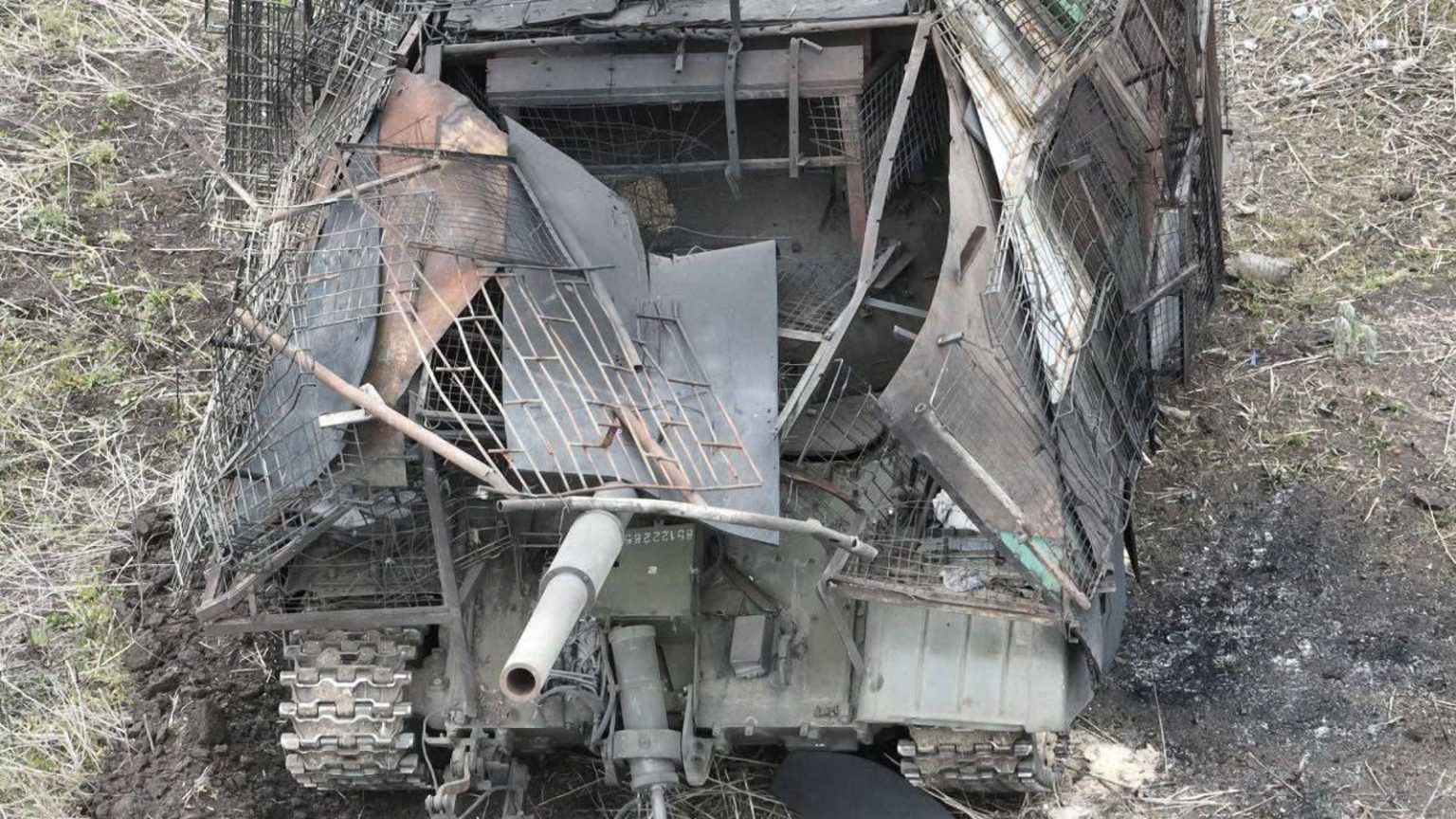In early April, a new type of armored vehicle known as the “turtle tank” made its debut on the battlefields of the ongoing conflict between Russia and Ukraine. These turtle tanks were essentially standard Russian tanks such as the T-62, T-72, or T-80 models that had additional metal shells made of roofing material, grates, and mesh attached to them. While these tanks may have appeared strange, they proved to be effective in providing protection against explosive first-person-view drones that Ukrainian troops were using against Russian forces.
However, recent developments have shown that Ukrainian troops have managed to destroy several of these turtle tanks, indicating that no wartime innovation is foolproof. Weapons historian Matthew Moss had predicted that Ukrainian forces would eventually find ways to counter the protected turtle tanks, as they are a response to a specific technological challenge posed by the drones used by Ukrainian troops. The tanks’ shells blocked the drones from most angles, and some crews even added radio jammers to further disrupt the drones’ control signals.
The turtle tanks provided the Russians with a tactical advantage as they could advance towards Ukrainian positions with greater protection from the drones and clear mines using rollers mounted on the front of the tanks. As the primary threat to the Russian forces at the time were the explosive drones from Ukraine, the turtle tanks were effective in supporting Russian operations and posed a significant challenge to Ukrainian forces. However, the munitions blockade that had limited U.S. aid to Ukraine for months was lifted, and a large consignment of fresh ammunition was sent to Ukraine, changing the dynamics of the conflict.
With the arrival of significant firepower and munitions to Ukrainian forces, their ability to counter Russian attacks has increased. Ukraine can now deploy heavy artillery shells and missiles, in addition to launching drones, making it more difficult for turtle tanks to withstand the impact of these larger munitions. The thin metal shells of the turtle tanks are no match for the firepower of Ukrainian forces, as artillery rounds with explosive payloads exceeding 25 pounds can easily penetrate the tanks and cause catastrophic damage.
The compromised visibility and mobility of the turtle tanks due to the welded-on metal shells present additional challenges for the crew and passengers of these vehicles. As Ukrainian forces continue to strengthen their arsenal and develop strategies to counter the turtle tanks, the Russians may need to rethink their use of these vehicles. Modifying the design of the tanks to improve mobility and visibility may be necessary, as shrinking the metal shell could potentially make them more vulnerable to the drones originally targeted by the turtle tanks.
In the evolving landscape of the conflict, both sides are likely to adapt their strategies and technologies to counter each other’s advances. As Moss noted, there will be a continued evolution of measures and countermeasures in response to the changing tactics and weaponry used in the war. This ongoing technological arms race highlights the complexities and challenges of modern warfare, where innovation and adaptation play crucial roles in determining the outcome on the battlefield.


